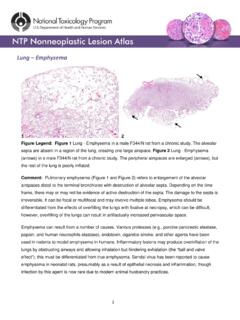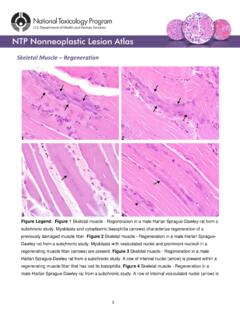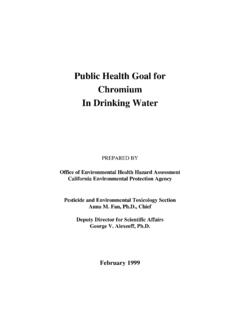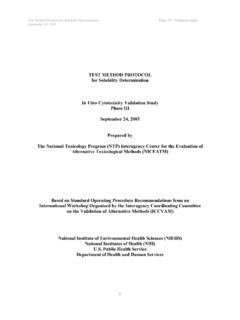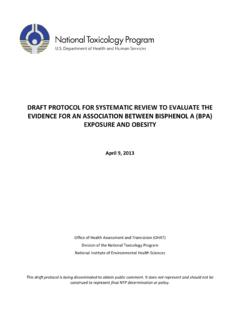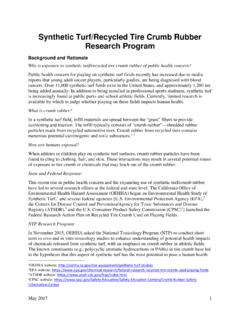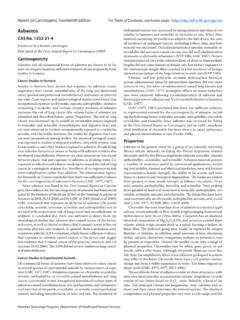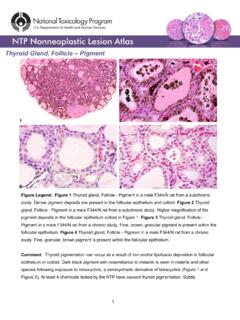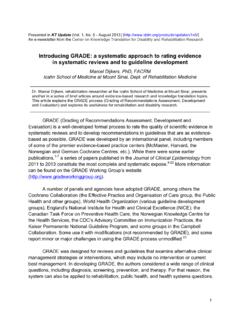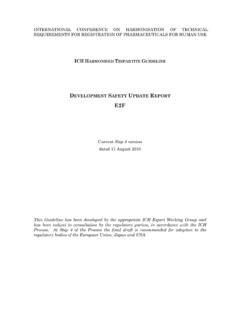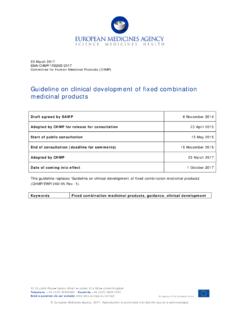Transcription of OECD Test Guideline 420: Acute Oral Toxicity - Fixed Dose …
1 OECD/OCDE 420 Adopted: 17th December 2001 OECD Guideline FOR TESTING OF CHEMICALS Acute oral Toxicity Fixed Dose Procedure INTRODUCTION 1. OECD guidelines for the Testing of Chemicals are periodically reviewed in the light of scientific progress or changing assessment practices. The original Guideline 420 was adopted in July 1992 as the first alternative to the conventional Acute Toxicity test, described in Test Guideline 401. Based on the recommendations of several expert meetings, revision was considered timely because: i) international agreement had been reached on harmonised LD50 cut-off values for the classification of chemical substances, which differ from the cut-offs recommended in the 1992 version of the Guideline , and ii) testing in one sex (usually females) is now considered sufficient.
2 2. Traditional methods for assessing Acute Toxicity use death of animals as an endpoint. In 1984, a new approach to Acute Toxicity testing was suggested by the British Toxicology Society based on the administration at a series of Fixed dose levels (1). The approach avoided using death of animals as an endpoint, and relied instead on the observation of clear signs of Toxicity at one of a series of Fixed dose levels. Following UK (2) and international (3) in vivo validation studies the procedure was adopted by the Council as a Test Guideline in 1992. Subsequently, the statistical properties of the Fixed Dose Procedure have been evaluated using mathematical models in a series of studies (4)(5)(6). Together, the in vivo and modelling studies have demonstrated that the procedure is reproducible, uses fewer animals and causes less suffering than the traditional methods and is able to rank substances in a similar manner to the other Acute Toxicity testing methods (Test guidelines 423 and 425).
3 3. Guidance on the selection of the most appropriate test method for a given purpose can be found in the Guidance Document on Acute oral Toxicity Testing (7). This Guidance Document also contains additional information on the conduct and interpretation of Guideline 420. 4. Definitions used in the context of this Guideline are set out in Annex 1. INITIAL CONSIDERATIONS 5. It is a principle of the method that in the main study only moderately toxic doses are used, and that administration of doses that are expected to be lethal should be avoided. Also, doses that are known to cause marked pain and distress, due to corrosive or severely irritant actions, need not be administered. Moribund animals, or animals obviously in pain or showing signs of severe and enduring distress shall be humanely killed, and are considered in the interpretation of the test results in the same way as animals that died on test.
4 Criteria for making the decision to kill moribund or severely suffering animals, and guidance on the recognition of predictable or impending death, are the subject of a separate Guidance Document (8). 6. The method provides information on the hazardous properties and allows the substance to be ranked and classified according to the Globally Harmonised System (GHS) for the classification of chemicals which cause Acute Toxicity (9). 1/14 420 OECD/OCDE 7. The testing laboratory should consider all available information on the test substance prior to conducting the study. Such information will include the identity and chemical structure of the substance; its physico-chemical properties; the results of any other in vitro or in vivo Toxicity tests on the substance; toxicological data on structurally related substances; and the anticipated use(s) of the substance.
5 This information is necessary to satisfy all concerned that the test is relevant for the protection of human health, and will help in the selection of an appropriate starting dose. PRINCIPLE OF THE TEST 8. Groups of animals of a single sex are dosed in a stepwise procedure using the Fixed doses of 5, 50, 300 and 2000 mg/kg (exceptionally an additional Fixed dose of 5000 mg/kg may be considered, see paragraph 19). The initial dose level is selected on the basis of a sighting study as the dose expected to produce some signs of Toxicity without causing severe toxic effects or mortality. Clinical signs and conditions associated with pain, suffering, and impending death, are described in detail in a separate OECD Guidance Document (8).
6 Further groups of animals may be dosed at higher or lower Fixed doses, depending on the presence or absence of signs of Toxicity or mortality. This procedure continues until the dose causing evident Toxicity or no more than one death is identified, or when no effects are seen at the highest dose or when deaths occur at the lowest dose. DESCRIPTION OF THE METHOD Selection of animal species 9. The preferred rodent species is the rat, although other rodent species may be used. Normally females are used (7). This is because literature surveys of conventional LD50 tests show that usually there is little difference in sensitivity between the sexes, but in those cases where differences are observed, females are generally slightly more sensitive (10).
7 However, if knowledge of the toxicological or toxicokinetic properties of structurally related chemicals indicates that males are likely to be more sensitive then this sex should be used. When the test is conducted in males, adequate justification should be provided. 10. Healthy young adult animals of commonly used laboratory strains should be employed. Females should be nulliparous and non-pregnant. Each animal, at the commencement of its dosing, should be between 8 and 12 weeks old and its weight should fall in an interval within + 20 % of the mean weight of any previously dosed animals. Housing and feeding conditions 11. The temperature of the experimental animal room should be 22 C (+ 3 C). Although the relative humidity should be at least 30% and preferably not exceed 70% other than during room cleaning the aim should be 50-60%.
8 Lighting should be artificial, the sequence being 12 hours light, 12 hours dark. For feeding, conventional laboratory diets may be used with an unlimited supply of drinking water. Animals may be group-caged by dose, but the number of animals per cage must not interfere with clear observations of each animal. 2/14 OECD/OCDE 420 Preparation of animals 12. The animals are randomly selected, marked to permit individual identification, and kept in their cages for at least 5 days prior to the start of dosing to allow for acclimatisation to the laboratory conditions. Preparation of doses 13. In general test substances should be administered in a constant volume over the range of doses to be tested by varying the concentration of the dosing preparation.
9 Where a liquid end product or mixture is to be tested however, the use of the undiluted test substance, ie at a constant concentration, may be more relevant to the subsequent risk assessment of that substance, and is a requirement of some regulatory authorities. In either case, the maximum dose volume for administration must not be exceeded. The maximum volume of liquid that can be administered at one time depends on the size of the test animal. In rodents, the volume should not normally exceed 1mL/100g of body weight: however in the case of aqueous solutions 2 mL/100g body weight can be considered. With respect to the formulation of the dosing preparation, the use of an aqueous solution/suspension/emulsion is recommended wherever possible, followed in order of preference by a solution/suspension/emulsion in oil ( corn oil) and then possibly solution in other vehicles.
10 For vehicles other than water the toxicological characteristics of the vehicle should be known. Doses must be prepared shortly prior to administration unless the stability of the preparation over the period during which it will be used is known and shown to be acceptable. PROCEDURE Administration of doses 14. The test substance is administered in a single dose by gavage using a stomach tube or a suitable intubation canula. In the unusual circumstance that a single dose is not possible, the dose may be given in smaller fractions over a period not exceeding 24 hours. 15. Animals should be fasted prior to dosing ( with the rat, food but not water should be withheld over-night; with the mouse, food but not water should be withheld for 3-4 hours).
